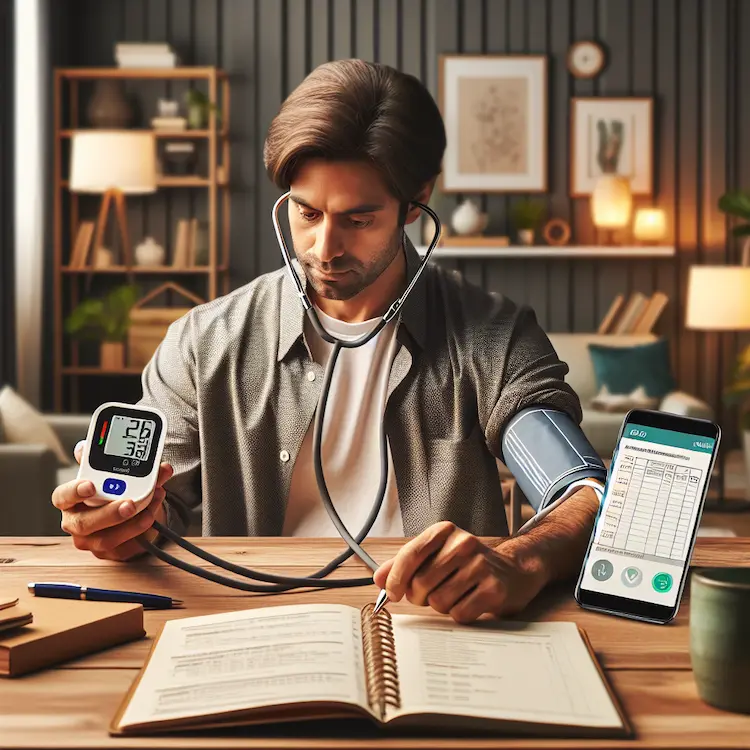Chronic kidney disease (CKD) and hypertension are closely intertwined, with high blood pressure (BP) being both a cause and consequence of kidney damage. Accurate BP measurement is crucial for diagnosing and managing hypertension in CKD patients, as it directly impacts disease progression and cardiovascular outcomes. This article explores various methods of BP monitoring in CKD, their advantages and limitations, and provides practical advice for healthcare providers and patients.
Importance of Blood Pressure Control in CKD
Hypertension is extremely common in CKD patients, with prevalence increasing as kidney function declines. Proper BP management is vital because:
- It slows CKD progression
- It reduces the risk of cardiovascular disease and mortality
- It improves overall patient outcomes
The Systolic BP Intervention Trial (SPRINT) demonstrated that targeting a systolic BP <120 mmHg in high-risk patients, including those with CKD, reduced cardiovascular morbidity and mortality by 25% compared to a target of <140 mmHg.

Methods of Blood Pressure Measurement
Office Blood Pressure Measurement
Traditionally, BP has been measured in clinical settings using manual or automated devices. However, office BP measurements can be inaccurate due to several factors:
- White coat effect
- Observer bias
- Improper technique
- Limited number of readings
To improve accuracy, standardized office BP measurement protocols have been developed:
- Use validated automated devices
- Ensure proper cuff size
- Allow 5 minutes of rest before measurement
- Take multiple readings (at least 2-3)
- Avoid talking during measurement
Automated Office Blood Pressure (AOBP)
AOBP involves using programmable devices to take multiple BP readings automatically without an observer present. This method:
- Reduces white coat effect
- Provides more accurate readings compared to conventional office measurements
- Correlates better with ambulatory BP monitoring
Ambulatory Blood Pressure Monitoring (ABPM)
ABPM is considered the gold standard for BP assessment in CKD patients. It involves wearing a portable device that measures BP at regular intervals over 24 hours. ABPM offers several advantages:
- Provides a comprehensive BP profile, including nocturnal readings
- Identifies masked hypertension and white coat hypertension
- Better predicts cardiovascular and renal outcomes
- Detects abnormal BP patterns (e.g., non-dipping, reverse dipping)
A meta-analysis found that ABPM-derived BP values have a stronger association with cardiovascular and renal outcomes compared to office BP measurements in CKD patients.
Home Blood Pressure Monitoring (HBPM)
HBPM involves patients measuring their own BP at home using validated devices. Benefits include:
- Increased patient engagement
- Detection of masked hypertension
- Better correlation with target organ damage compared to office BP
- Cost-effective long-term monitoring
For optimal results, patients should:
- Use validated devices with appropriate cuff size
- Measure BP twice daily (morning and evening) for 7 days
- Take duplicate readings each time
- Record all measurements and relevant information (e.g., medication timing)
Comparison of BP Monitoring Methods
| Method | Advantages | Limitations |
|---|---|---|
| Office BP | – Widely available – Familiar to patients and providers |
– White coat effect – Limited number of readings – Potential for measurement errors |
| AOBP | – Reduces white coat effect – Multiple automated readings – Better correlation with ABPM |
– Requires specific equipment – May not be available in all settings |
| ABPM | – Gold standard – Comprehensive 24-hour profile – Detects abnormal BP patterns |
– Expensive – May cause discomfort – Limited availability |
| HBPM | – Cost-effective – Increases patient engagement – Allows long-term monitoring |
– Requires patient training – Potential for measurement errors – Device accuracy concerns |
Blood Pressure Targets in CKD
Recent guidelines have updated BP targets for CKD patients:
- KDIGO 2021 Guidelines:
- Recommend a target systolic BP <120 mmHg using standardized office BP measurement
- Emphasize the importance of proper measurement technique
- European Society of Cardiology (ESC) 2021 Guidelines:
- Suggest a target office BP <140/90 mmHg for all CKD patients
- Recommend lowering BP to <130/80 mmHg in most CKD patients, especially those with high cardiovascular risk or significant albuminuria
It’s important to note that these targets should be individualized based on patient characteristics, tolerability, and comorbidities.

Practical Advice for BP Monitoring in CKD
- Use standardized BP measurement techniques in clinical settings
- Consider implementing AOBP in clinics when possible
- Utilize ABPM for initial diagnosis and to guide treatment decisions
- Encourage HBPM for long-term management and patient engagement
- Educate patients on proper BP measurement techniques
- Choose validated devices appropriate for CKD patients
- Interpret BP readings in the context of overall clinical picture
- Regularly calibrate and maintain BP monitoring equipment
Conclusion
Accurate blood pressure monitoring is crucial for optimal management of CKD patients. While ABPM remains the gold standard, a combination of standardized office measurements, AOBP, and HBPM can provide comprehensive BP assessment. Healthcare providers should be familiar with various BP monitoring methods and their limitations to ensure appropriate diagnosis and management of hypertension in CKD patients. Implementing these strategies can lead to improved cardiovascular outcomes and slower progression of kidney disease.


